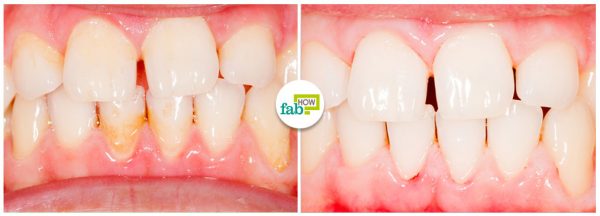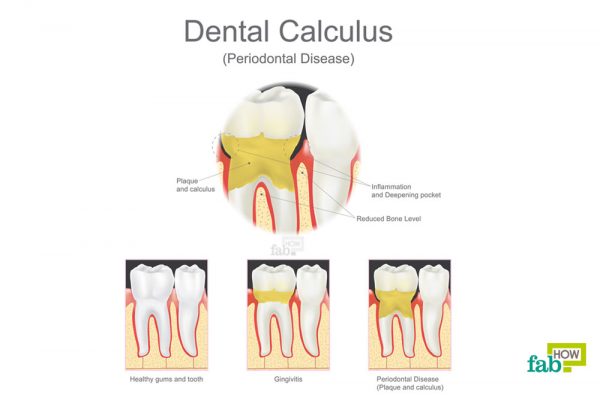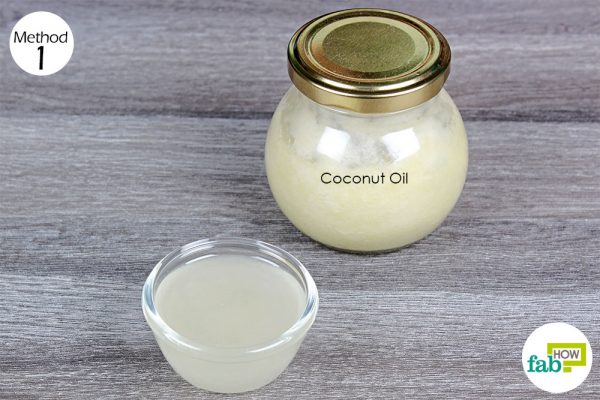Did you know there are about 100 to 200 types of bacteria in your mouth at any given point in time?
Before you gross out, it is the same bacteria that helps maintain your oral biology. However, if you frequently dodge brushing and flossing your teeth, these hundreds of bacteria can become thousands. Ultimately, it can lead to plaque and tartar buildup and give way to tooth decay.
Many people use the terms plaque and tartar interchangeably, but there is a significant difference between the two.
Plaque is a layer of bacteria that gathers around the teeth when you eat or drink. It can be removed easily by brushing and flossing daily.
Tartar, on the other hand, is the mineralized plaque that forms a hard coating over your teeth due to poor oral hygiene habits. It can be difficult to get rid of and, more often than not, needs a dentist’s intervention.
Contents
Causes of Plaque and Tartar
- Not brushing your teeth daily. If you do not brush your teeth twice a day, plaque can build up and eventually harden into tartar.
- Bad brushing technique. If you do not target every tooth while brushing and miss cleaning the chewing surfaces or between the teeth, the bacteria has an opportunity to settle in the crevices.
- Not flossing regularly. Since flossing is no fun, people often skip it. Even if you brush your teeth diligently, not flossing them regularly leads to plaque near the gum line and can have serious implications like gingivitis of periodontitis.
- Eating sugary foods. Bad bacteria thrive on carbohydrates like sugar. If you have a sweet tooth, you are more prone to plaque buildup. The bacteria turn the sugar into acid that erodes the tooth enamel and leads to cavities and gum disease.
- A high concentration of sugar in the blood and saliva that can occur from time to time with diabetes makes you more susceptible to dental plaque.
Symptoms of Plaque and Tartar Buildup
- Stained or yellow teeth
- Bad breath
- Receding, inflamed or bleeding gums
- Tooth decay
- Loose or sensitive teeth
Ways to Prevent Plaque and Tartar Buildup
Maintaining proper oral hygiene can curb plaque and tartar buildup. Here are some practices that contribute to good oral health.
- Brush your teeth twice every day. Use a soft-bristle brush to scrub your teeth for at least 2 minutes. Target each tooth to clean its outer, upper and lower part. Use a brush that fits in your mouth comfortably and can clean the hard-to-reach surfaces, especially the molars. Also, tilt the brush at 45 degrees and brush at the gum line with small, gentle strokes.
- Floss daily. Even if you have invested in a high-end toothbrush, flossing is still indispensable in preventing dental plaque. Dental floss helps remove the food particles that get stuck in tooth crannies and could turn into tartar.
- Use fluoride toothpaste. Choose tartar-control toothpaste that has fluoride. Toothpastes containing sodium fluoride are safe to use and can prevent cavities as well as repair decaying teeth.
- Brush your tongue. The bacteria that causes plaque also coats your tongue. Brushing your tongue along with your teeth removes more harmful bacteria from your mouth and also prevents foul breath.
- Rinse with mouthwash daily. You can use an antiseptic mouthwash to notch up your oral hygiene. Rinsing your mouth with water after every meal is also helpful.
- Go slow with sugar. Limit your intake of sugary foods like candies and sweets as well as starchy foods like breads and chips that are sticky and can deposit between the teeth.
- Replace soft drinks with water. Though you may be hooked on carbonated drinks, they do no good for your teeth. Besides containing added sugars, soft drinks contain phosphoric and citric acid that can erode tooth enamel and invite cavities.
- Drink water frequently. Not only will you stay hydrated, drinking water frequently also helps rinse your mouth and flush out bacteria.
- Don’t smoke. Smoking can take a toll on your dental health. It makes your mouth a breeding ground for bacteria. It also causes bad breath and tooth discoloration. Since smoking cuts down the blood supply to your gums, it can also slow down the recovery from an oral surgery.
- Eat a balanced diet. Eat more whole grains to promote saliva production, which acts as a mineral defense against tooth decay. Munch on healthy snacks like fresh fruits and vegetables (especially carrots, cucumbers and apples) that naturally scrub your teeth and keep them shiny.
- Visit the dentist regularly. Even with brushing and flossing faithfully, everyone’s teeth need expert care on a regular basis. See your dentist at least twice a year to keep a check on your pearly whites.
Home Remedies to Remove Plaque and Tartar from Your Teeth
Along with following a regular oral hygiene regimen, you can employ two home remedies to give your teeth some extra care and help remove plaque and tartar buildup.
Method 1: Oil Pulling
Oil pulling isn’t a miracle but an ancient tradition of Ayurvedic medicine. Of late, the oil pulling technique has been making the rounds on social media sites and is being endorsed by many celebrities.
It involves swishing coconut oil around in your mouth for a good 20 minutes before you spit it out. Its antibacterial and anti-inflammatory properties help remove bacteria from your mouth and prevent plaque buildup.
Single-Step Treatment: Swish coconut oil around in your mouth
- As soon as you wake up, put 1 tablespoon of extra-virgin coconut oil in your mouth. You can also use sesame or olive oil.
- Swish it around in your mouth for 15 to 20 minutes. Try to cover every nook and corner of your mouth. You can stop for a bit if your jaw starts to hurt, but do not swallow the oil.
- Once the oil becomes too foamy, spit it out and rinse your mouth thoroughly with water.
- Then, do your regular brushing and flossing.
- Repeat every day in the morning on an empty stomach and again before going to bed to get positive results within 10 days.
Method 2: Baking Soda
Baking soda is a magnificent ingredient in a number of health and beauty hacks. It has also been cheered by grandmas worldwide for being effective and economical in removing dental plaque. Its mild abrasive texture can scrub your teeth and remove tartar, while its antibacterial nature keeps gum problems at bay.
Single-Step Treatment: Brush your teeth with baking soda
- Dip your wet toothbrush in baking soda. To remove harder buildup, you can mix a pinch of salt into 1 tablespoon of baking soda.
- Use it to brush your teeth for 3 to 5 minutes.
- Spit it out and rinse your mouth with water.
- Use it every alternate day to see visible change within 1 to 2 weeks. Once the plaque has cleared off, use it once a week to prevent future tartar buildup.
Tips
- You can use food coloring to reveal plaque and tartar on your teeth. Before you start, coat your lips with petroleum jelly to prevent staining. Apply food coloring along your teeth and gums using a cotton swab, or mix it in some water and swish it around in your mouth. The food coloring will stick to the plaque, revealing the problem areas.
- You can also invest in an electric toothbrush, as they have a better success rate in cleaning your teeth without involving a lot of muscle.
- You can also use apple cider vinegar to brush your teeth once or twice a week.
- Rubbing the inside of an orange peel over your teeth can also remove plaque and stains.
- If you can tolerate the taste, chew on a few cloves every day to ward off bad breath.
- Consuming more dairy products can also strengthen your tooth enamel and prevent cavities.
- Chewing sesame seeds also prevents plaque and builds tooth enamel, due to their high calcium content.
References:
Summary of How to Remove Plaque and Tartar
Download this infographic.






